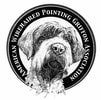AWPGA Longevity Survey Results
The AWPGA conducted an online survey on longevity that included questions about age at death and cause of death. Data on a total of 68 individual dogs were received. Half of the dogs lived for 12 years or more, while half had shorter lives [median = 12 years]. The age at death for individual dogs ranged from 0.58 years to 16.5 years. The average age at death was approximately 11 years of age [mean = 11 years]. A quarter of the dogs died a natural death while ¾ were euthanized.
Cancer was the leading cause of death, mentioned in approximately 1/3 of cases, followed by “old age/dementia,” mentioned in about 22% of cases. Accident/Trauma was the third most frequently mentioned at about 9%. The cause of death was reported as unknown in about 6% of the cases. Bloat, epilepsy, kidney failure, endocrine (Cushing’s and diabetes) each accounted for less than 3% of the cases. Autopsy was performed in less than 8% of cases reported.
17.6% were intact females, 45.6% were spayed females, 25.0% were intact males, and 11.8% were neutered males. Although not significant, there was a trend for spayed females to live longer than intact females (62.5 % of the spayed females died after the age of 13.5 whereas only 6.3% of intact females lived that long). Longevity was comparable for intact and neutered males.
The cancers reported were not concentrated in any particular organ or body system, nor did they appear to be of a specific type (adenocarcinoma, carcinoma, fibrosarcoma, hemangiosarcoma, lymphoma, unknown were all represented). Half of the accident/trauma deaths were related to being hit by a car.
Respondents were also invited to tell us what health-related conditions were most concerning for wirehaired pointing griffons. About half of the respondents replied. Concerns about cancer received the most mentions; hip dysplasia, tick-borne diseases, and bloat were mentioned as areas where more information was needed. Many noted that griffons tended to be relatively healthy and that their main concerns were similar to those of most dog owners – being sure to get the diet and exercise to keep the breed happy.
All images and content Copyright © 2023 the American Wirehaired Pointing Griffon Association, ALL rights reserved.
Copyright Policy /Acceptance & Use Policy
Copyright Policy /Acceptance & Use Policy
